On Christmas Day, 2007, an Amur tiger escaped its supposedly inescapable enclosure, crossed a thirty-three-foot dry moat, leaped over a thirteen-foot wall, and attacked three men at the zoo café. According to the San Francisco Zoo, these three individuals had harassed the tiger during their visit, which may have been the reason for the attack (the two survivors denied this accusation). During the attack, police officers shot the tiger three times with a .40-caliber pistol, but this only made the tiger angrier. A fourth shot to the tiger’s skull (from point-blank range) finally killed the animal. All three victims were badly mauled, and one (seventeen-year-old Carlos Sousa Jr.) was killed. The Zoo later modified the tiger enclosures to prevent further incidents from occurring.
The views expressed in this article reflect those of the author mentioned, and not necessarily those of New Creation.
Are Humans Prey?
We hate to think of ourselves as prey. Author Gary Paulsen called such an idea “a lessening thought.”1 People prefer to believe our species is safe from predation. Statistics assure us human deaths from animal attacks are almost unheard of. We believe (with good reason) that Homo sapiens are apex predators, comfortably sitting atop the food chain. Man’s dominion is more than a biblical idea; it also reflects how people view themselves as compared to the beasts.
While it is true that wild animals seldom attack or consume humans, the idea that they never consider humans prey is simply false. Attacks on humans are not always self-defense on the part of the animal. Sometimes, animals stalk, hunt, and attack humans for the same reason they pursue other animals: for food. We call individual animals that adopt humans into their regular diet “man-eaters.” Unfortunately, the idea that a man-eater is an irregular occurrence is also a myth. In some areas of the world, many animals develop a taste for humans and actively hunt them.
For example, in Tanzania, lions killed 1,000 people between 1990 and 2007.2 In the 1920s, Indian lions killed 7,000 people in a mere 5-year period.* Tigers in India’s United Provinces killed over 1,000 people in both 1922 and 1927. Because many go unrecorded, annual data concerning these deaths is sparse. What we do know is that tiger attacks occurred “at high frequency during the entire 20th Century”.3 A vast majority of these attacks were (and still are) unprovoked. Fatal tiger, leopard, and lion encounters in Asia and Africa usually involve a wild cat sneaking into a village at night and carrying off a victim. Today, deaths by such animal attacks continue to occur with relative frequency in several countries.
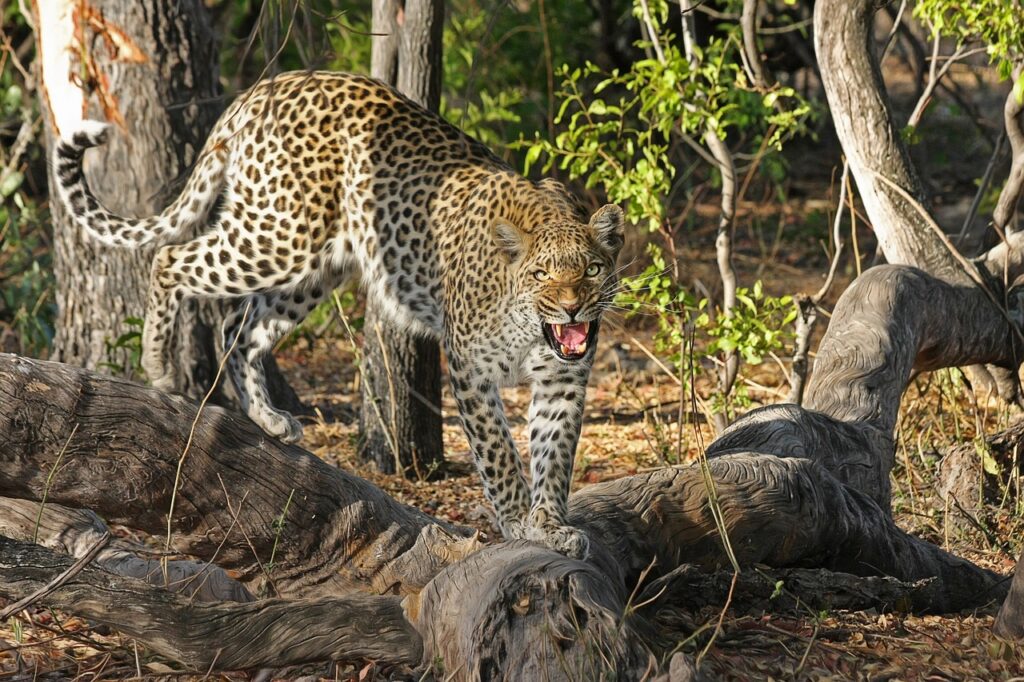
Dominion and the Fall
The existence of man-eaters is indisputable. At first glance, this is not a horribly difficult thing for creationists to explain. The Fall of man in Genesis 3 documents the origin of many natural horrors we observe today, including predation on humans. But if we fast forward through Genesis a few chapters, God makes a promise that should make creationists question why man-eating animals are so frequent.
Genesis 9:1-3 (in ESV) says:
And God blessed Noah and his sons and said to them, ‘Be fruitful and multiply and fill the earth. The fear of you and the dread of you shall be upon every beast of the earth and upon every bird of the heavens, upon everything that creeps on the ground and all the fish of the sea. Into your hand they are delivered. Every moving thing that lives shall be food for you. And as I gave you the green plants, I give you everything.’
The Dominion mandate of Genesis 1 is repeats here in chapter 9, but this time God declares something new: all creatures will fear man. But if all animals fear man, why do many of them attack, kill, and even consume people without provocation? If God “delivered” all living things into the hands of Noah’s descendants, then why are some of them so dangerous? Reconciling the frequency of man-eaters with this new Dominion mandate is a fascinating endeavor, and it will require several steps. First, we must define the “fear and dread of man” based on its context in Scripture. Second, we must analyze the man-eaters themselves, along with their biological and ecological influences. Finally, we will provide one example that demonstrates how the dread of man is compatible with the existence of man-eaters in nature.
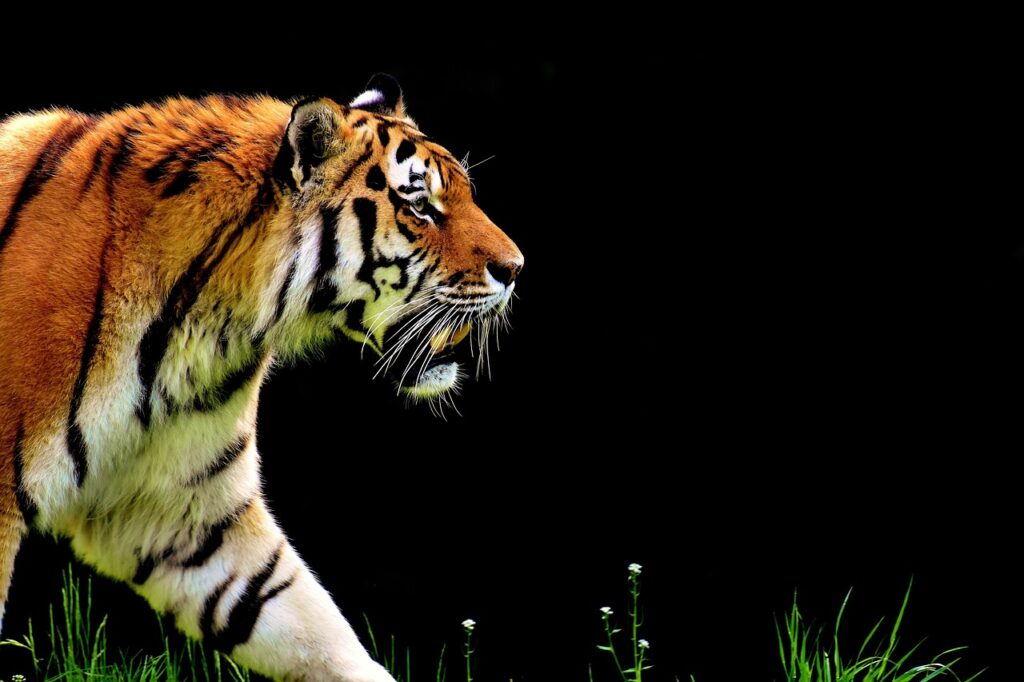
A Look at Genesis 9:2
What is the “fear and dread of man”?
Could it refer to a devoted reverence, such as when God commands “fear the Lord and serve Him in sincerity and faithfulness” (Joshua 24:14)? Here, God is commanding the Israelites to abandon all false gods and to serve Him alone. Perhaps the fear of man suggests the kind of fear in which animals humbly submit to mankind, who has dominion over the beasts. This interpretation would explain the domestication of cattle, livestock, and pets, which are unafraid of humans but respectful of their owners.
A devoted reverence, however, is likely not what Genesis 9 refers to. Instead, the phrase “fear and dread” seems to imply a fear as traditionally understood. Indeed, the only other context in which scripture uses the phrase “fear and dread of you” is Deuteronomy 11:25, where God promises the Israelites that “the Lord your God will lay the fear of you and the dread of you on all the land that you shall tread.” In this verse, the “fear and dread” refers to a supernaturally imposed fear that God places in the hearts of Israel’s enemies. Based on this comparison alone, one might conclude that God divinely placed the dread of man in His creation, so that all animals might fear mankind.
A “Psychological Transformation”
Philip Bell supports this latter interpretation. Bell, who writes for Creation Ministries International4, suggests that “The ‘dread of man’ likely represents a supernatural intervention which forever altered animal psychology”.5 According to this understanding, God’s blessing to Noah in Genesis 9 was not merely describing the nature of the post-Flood world, as some would argue. He was altering the current state of His creation. Old Testament scholar Herbert Carl Leupold suggested that this alteration was necessary to protect Noah and his family as they left the Ark.6 Without the implementation of this natural fear, many carnivorous animals may have “gotten the upper hand” and “exterminated” the sole survivors of the Flood.7
Building off Leupold’s interpretation, Bell concludes that the dread of man is “a wholesale psychological transformation.”8 Immediately following the Flood, all animals underwent a fundamental change, from a toleration of man to “great anxiety and alarm” towards him.9 Therefore, post-Flood animals have an instinctive fear of all humans. This instinct comes at just the right time: when God first allows humans to hunt and eat animals (Genesis 9:3). The fear of man protects both the humans from the beasts and the beasts from the humans.
The Modification of Creation
Genesis 9 seems to imply that God drastically changed His own creation. But if God meant the dread of man to protect us, why do animals hunt and kill humans today? Can God’s supernatural workings in creation simply wear off over time? While it is unlikely that God’s natural laws simply disappear, it is possible that certain factors or circumstances can cause animals to overcome their fear of man. Consider the domestication of livestock and pets. People can teach wild animals to live alongside humans, oftentimes for their benefit as well as ours. Scripture itself describes this in James 3:7.

Of course, people didn’t train man-eaters to hunt other people. But our own pets testify that certain circumstances encourage animals to overcome that “dread of man” instinct. Pets, after all, had to be domesticated and trained to live with humans. Perhaps different but equally effective circumstances could lead more dangerous animals to overcome their fear as well, leading to deadly human-wildlife interactions. Now that we have honestly evaluated Genesis 9:2, let’s take a closer look at these problematic man-eating beasts.
Can Man-Eaters Be Created?
The day God declared that all animals would fear man, there were exactly eight human beings alive. Since then, things have changed. Humans have expanded to every part of the globe, and there are now billions of us. As a result, human-wildlife conflicts are common occurrences, as people and animals struggle to fit together in the same space. While animals tend to avoid humans at all costs, there are simply too many people around to do this successfully. As a result, human expansion impacts all species (and most negatively so). For the last few thousand years, a human-dominated world has forced the animal kingdom to adapt.
Inevitably, some conflicts between humans and animals become dangerous. Usually these are more dangerous for the animal species (the dodo bird and passenger pigeon are two obvious examples). But as humans advance further and further into the shrinking wilderness, some animals have uniquely adjusted to human expansion. They have come to consider Homo sapiens as a source of meat. Over time, carnivorous creatures have learned (or perhaps been unintentionally trained) to overcome their caution towards humans. They have begun to consider them potential prey instead.
Many factors could contribute to this process. Legendary hunter of man-eaters Jim Corbett frequently cited injuries as a partial cause of man-eating. Several of the culprits he shot were unable to hunt their usual prey due to bodily wounds (including the famous Champawat tiger, the deadliest animal ever recorded). These animals’ only alternative to starvation was to find a new prey species. In some cases, humans were the most available option. To best describe a scenario that could create a man-eater, let’s evaluate a particularly legendary example.

The Man-eaters of Tsavo
In modern-day Kenya, 1898, the British East Africa Company tasked Colonel John Henry Patterson to oversee the construction of a railway bridge. Soon after his arrival, two adult male lions began attacking the railway workers and carrying them off to feed. The British East Africa Company hired low-wage Indian workers. These workers became convinced that the lions were not animals but demons. J.H. Patterson’s own account of the attacks is still terrifying to read today:
In the whole of my life, I have never experienced anything more nerve-shaking than to hear the deep roars of these dreadful monsters growing nearer and nearer, and to know that some one or other of us was doomed to be their victim before morning dawned. Once they reached the vicinity of the camps, the roars completely ceased, and we knew that they were stalking for their prey. Shouts would then pass from camp to camp, “Khabar dar, bhaieon, shaitan ata” (“Beware, brothers, the devil is coming”), but the warning cries would prove to no avail, and sooner or later agonizing shrieks would break the silence, and another man would be missing from roll-call next morning.”
Patterson10
Eventually, the lion attacks occurred so regularly the laborers refused to work. Construction ceased altogether and could not resume until Patterson himself shot both lions. The Man-eaters of Tsavo killed a total of 28 workers and around 130 people total during their reign of terror. The story of the lions remains a popular legend in Kenya today.
As Patterson records, these attacks were unprovoked, and the lions were clearly hunting for food. What caused these two lions to turn on humans instead of their usual prey? Long after the events of 1898, studies have looked back on Colonel J.H. Patterson’s account to try and solve this question.
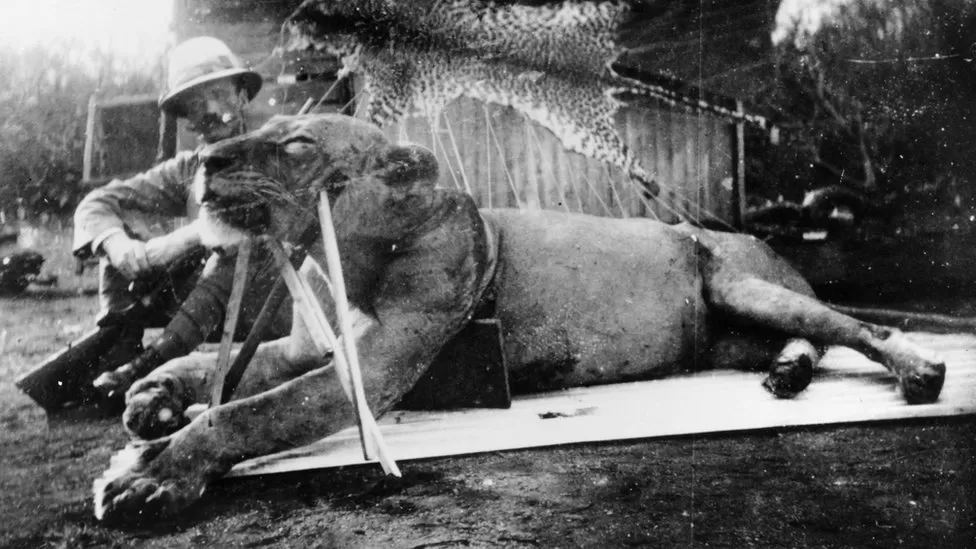
A Man-eater Origin Story
The creation of the Tsavo Man-eaters is like the origin story of a comic book supervillain. In their 2001 article, Julian Peterhans and Thomas Gnoske evaluated and documented the factors that encouraged these lions to begin taking human prey.11 The factors they presented are summarized below:
1. The depletion of normal prey species as an indirect result of the ivory trade forced lions to attack livestock and live closer to humans.**
2. Both lions’ lower left canines were lost due to “pre-existing traumas.” This could have hindered the lions from taking larger animals. Such injuries are common in wild predators. Here, Peterhans and Gnoske12 credit the injuries of the first Man-eater to a zebra or buffalo. The second Man-eater had recent injuries that are unlikely to have changed normal hunting behavior on their own.
3. Exposure to human meat as a result of the African slave trade conditioned scavengers to eat readily available human meat. Dead, sick, and dying slaves were often abandoned by slave caravans. This exposed them as easy prey for lions and hyenas. This may have “taught” the lions to view all humans as a potential food source.
4. Local burial practices would have left human bodies for scavengers as well. The Masai and Kikuyu peoples simply left their dead in the bush for wild animals to consume.
5. Disease and drought in 19th Century Kenya dramatically increased the number of human corpses available. Smallpox and famine, for example, killed thousands of Wakikuyu people between 1898 and 1899. The dead were usually left for the animals to consume. Hyenas that took advantage of this food supply are reported to have begun taking live children once the disease (and subsequently, the number of corpses) subsided. Coincidentally, a similar famine and drought killed many Wakamba people in Tsavo around the time of the lion attacks.

Conclusion
A close inspection of the Man-eaters of Tsavo demonstrates that the existence of man-eaters does not contradict the “fear and dread of man” in Genesis 9. Further, interpreting the verse as a supernatural modification of creation is compatible with the existence of man-eating beasts. Just as wild animals can overcome their fear of man through domestication, other wild animals can be trained and conditioned to view humans as prey. The “dread of man” that God established after the Flood was only an initial feature; it was not necessarily permanent or unalterable. Certain circumstances can drive animals to overcome this instinctive fear, but this does not undercut the truth of Genesis 9.
The Lasting (and Fading) Effects of Genesis 9
Most animals still fearfully avoid human interactions (even those that have adapted to live in rural or urban habitats), demonstrating that even today, God’s work in Genesis 9 is still observable. But human families have adopted other animals (such as dogs, cats, and horses) to live in human households. Other animals have learned to view humans as a source of comfort or treats, such as the ducks and geese at your local park. If a young or injured bird is cared for by a human, it can be “imprinted” and will intentionally approach humans in the future. And still other animals have overcome their fear of humans by learning to view them as food themselves.
Though the predation of man does not undercut the dominion of man, it should humble us as we remind ourselves that some animals missed the memo about man’s superiority. Dominion is not always synonymous with the top of the food chain. It should come as no surprise, then, when reports of man-eaters continue to spring up in the future. Furthermore, it is certainly not foolish to fear animals that are capable of doing us harm. Gary Paulsen has encountered such dangerous creatures before. In the afterword of one of his books, he writes, “It can be shocking, humbling, painful, very edifying and sometimes downright fatal to run into such an animal”.13
So tread carefully the next time you walk past the tiger enclosure.

Notes
*India is part of the African lion’s historic range, which used to cover Turkey and much of Southwest Asia in addition to Africa. The lion’s current range is far reduced from what it once was.
**The ivory trade eliminated a keystone species, which started an ecological chain of events. The decline of the elephant population allowed thick vegetation and “thorny undergrowth” to grow unimpeded. This forced native ungulates (the lions’ primary source of food) to leave the environment, which in turn left humans as the next best item on the menu.14
Footnotes
- Paulsen, Gary. Afterword. In Brian’s Hunt. Randomhouse Publishing. 2003. ↩︎
- Kushnir H and Packer C. 2019. “Perceptions of Risk From Man-Eating Lions in Southeastern Tanzania.” Front. Ecol. Evol. 7:47. ↩︎
- Linnell, John, et al. 2002. “The fear of wolves: A review of wolf attacks on humans.” Rocky Mountain Wolf Recovery Annual Reports. ↩︎
- Bell, Philip. 2021. “Dread of Man: Part 1–Hermeneutics, Cultural Evolution, and Biblical History.” Journal of Creation 35.2: 53-60. ↩︎
- Bell, 2021, 53-60. (Footnote 3) ↩︎
- Leupold, H.C. Exposition of Genesis. Evangelical Press, London, p. 329. First published by Wartburg Press, 1942. ↩︎
- Leupold, 329. (Footnote 5) ↩︎
- Bell, 2021, 53-60. (Footnote 3) ↩︎
- Bell, 2021, 53-60. (Footnote 3) ↩︎
- Patterson, J.H. The Man-eaters of Tsavo. Cruguru Publishing. First published in 1907. ↩︎
- Peterhans, J. C. K., & Gnoske, T. P. 2001. “The science of ‘man-eating’ among lions panthera leo with a reconstruction of the natural history of the ‘man-eaters of Tsavo’.” Journal of East African Natural History 90(1), 1-40. ↩︎
- Peterhans & Gnoske 2001, 1-40. (Footnote 10) ↩︎
- Paulsen, 2003. (Footnote 1) ↩︎
- Peterhans & Gnoske 2001, 1-40. (Footnote 10) ↩︎

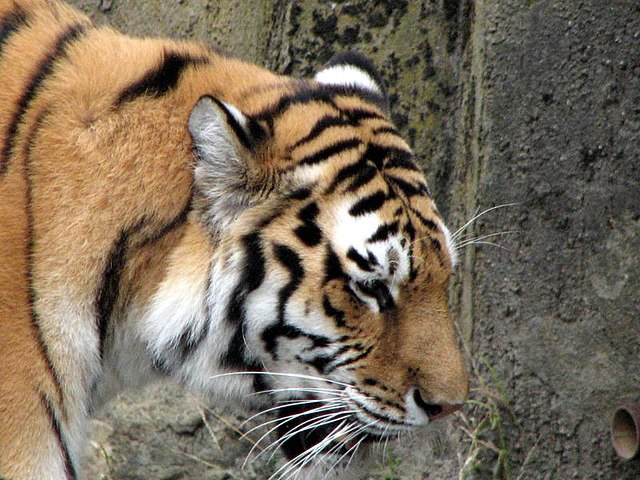
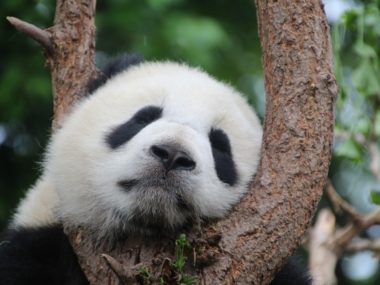

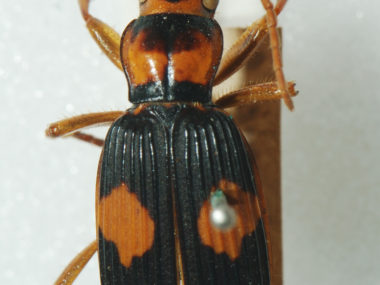
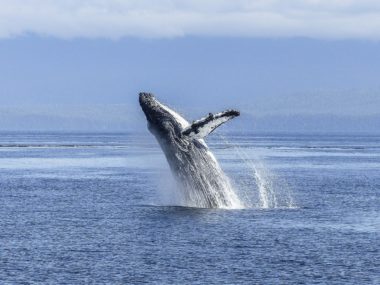
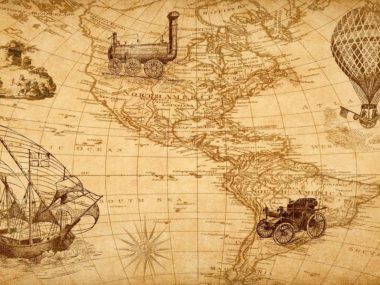
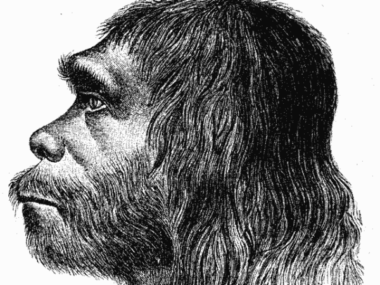



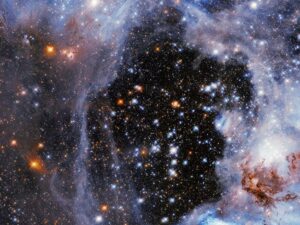
Interesting article and makes a good point. First all i see in nature science shows is INDEED creatures are afraid of man out of proportion to our humble size. if they were not we would of/would now be attacked like crazy. yet its rare. indeed I hear of the cats in india and so on. Yet I say the fear and dread is on them BASED on our moby language of confidence. Cats attack single people who are afraid but possibly they could do better in scaring them off. Even a rough dog will attack us but mostly they fear us. Gods provision is real and effective and remember after the flood creatures would be hugh and everywhere while before likely mankind was segregated from them. it was not a problem before. Further i suggest the so called warning colouration in creatures is also doing the same thing as our confidence helps us. creatures are scared of creatures with warning colours not because they have memorized they have poison but because of thier boldness. the colouration only says LOOK AT MY BOLDNESS and beware.
Thanks for sharing your thoughts! There are definitely a few things about humans that make animals avoid us. Field studies have suggested that animals hate human voices more than any other sound. Whether that is part of the “fear of man” or something else, I don’t know. But looking big and yelling loudly is usually the best way to get a dangerous animal to leave you alone. So, you are correct that our confidence plays a role. Then again, we might have LEARNED to be confident BECAUSE animals have generally feared us since the flood. So now we have a chicken-and-egg scenario. Also, I am not sure you can connect human confidence to aposematism. Bright coloration is usually just a chemical indicator. It suggests “I taste gross” moreso than “I am bold.” We know this because some species that are chemically edible mimic those that are chemically unsafe. But the mimic species must always be fewer than the aposematic species, otherwise the predator learns that bright colors are actually edible and will eat them. So, it’s not boldness (since predators would eat brightly colored animals if they were edible) but rather chemical.
thanks for the reply. I have thought about this somewhat for years. I know explorers ,always found foxes or birds perfectly unafraid of man. They only learned later. however I still see this as part of the protection as our boldness/confidence would right away take effect if we needed to. I know in Africa lions flee from people and its odd to the hunters.
Actually i would make the case the mimic of a brightly coloured real poisonius creature proves its just based on boldness and not the memory/association with taste. Remember its not just taste but real poison too. like in snakes. Indeed if it was by learning then the mimic would fool to much. it would not justify the mimics trying. So I am confident its only seeing their boldness INSiSTING to pat attention that scares everyone. the skunk, ladybug, bee all are boldly out there and being seen is their protection. Then this fits snugly with mankind’s case. its just our boldness and not some strange psychology god put into creatures. The tiger case in india just a special case of size over one person. but not three would he approach unlike herds of creatures.
Well thats my case.
I have heard of instances where explorers have found animals that will approach them fearlessly. Philip Bell mentions this in the article I referenced in my post. I think his take on the matter is accurate.
As for the aposematism, my point was that if coloration means boldness, then mimics could outnumber the species they are mimicking and be just fine, because their boldness scares off predators. But what we observe in nature is that once a mimic species gets too numerous, predators begin to eat them, because they eventually start to learn that lots of colorful butterflies are actually edible. So, the coloration has more to do with the chemicals than it does with boldness. If it was boldness, why do they even need to be chemically toxic? Regardless, I think you have a point with human boldness contributing to animals’ fear of man. Predators usually tend to steer clear of humans when we use noisy machinery, talk loudly, or boldly proclaim our presence in other ways. Thanks again for reading and sharing your perspective!
Good